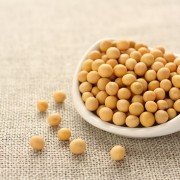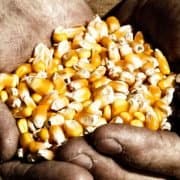Bean Leaf Beetles Showing up in Essex and Chatham Kent
/in Agronomy, News/by Ryan MortierBean leaf beetles (BLB) are showing up in early planted soybeans that were treated with only fungicide seed treatment. As the result of area wide use of insecticide seed treatments, this pest had much of a presence over the last decade. Thankfully, rescue treatments are still possible if threshold has been reached. Read more
Lots at stake for U.S. agriculture amid Mexican, Canadian trade threats
/in Grain Marketing, News/by Head OfficeCHICAGO, May 31 (Reuters) – With risks to U.S. soybean trade with China already in the air, trade threats from Mexico and Canada may be the last thing the U.S. agriculture industry wants to see. But that is precisely what happened on Thursday.
The United States fiercely angered its neighbors by proceeding with steel and aluminum tariffs against them despite earlier talks of possible exemptions. Unless the issue is resolved quickly, the impact on U.S. agriculture could worsen.
Canada and Mexico were the Nos. 1 and 3 importers of U.S. agricultural products by value in 2017, respectively. Both countries hit back with their own list of U.S. goods to target hours after the United States decided to impose tariffs on aluminum and steel imports from Canada, Mexico, and the European Union. Read more
Day-to-day work around the farm doesn’t have to be painful
/in Agronomy, Grain Marketing, News, Safety/by Ryan MortierHere are some tips to avoid injury by evaluating activities and preparing for them
Farmers take their aches and pains as part of their work, but it doesn’t have to be that way.
Understanding factors that contribute to on-farm injury can be a start to reducing risk of getting hurt.
Why it matters: Farmers are busy, especially in certain seasons of the year, so reducing risk of injury when they need to be at their physical best can have important farm business implications.
Julie Anceriz, Syngenta Canada’s territory health and safety manager, told a recent Whole Farm Health seminar put on by the Ag Women’s Network, that there are ergonomic factors that affect risk of injury no matter what type of work one does, whether sedentary at an office chair or in a combine or tractor, or active, lifting and doing heavy work. Read more
Nitrogen stabilizers
/in Agronomy, News/by Agronomy TeamNitrogen management has always been a challenge in high nitrogen demand crops such as corn and winter wheat.
The three pathways that can contribute to significant nitrogen loss are:
- Volatilization (loss of ammonia nitrogen to the atmosphere from the soil surface),
- Denitrification (which occurs when soils are saturated and in an anaerobic environment) and
- Leaching (downward movement of nitrate nitrogen out of the rooting zone due to excessive rains)
The challenge has always been to make nitrogen available when the crop needs it and minimize the exposure of nitrogen to the weather scenarios that contribute to N loss. Consider the nitrogen response relationship for corn and winter wheat (below):
Corn nitrogen response curve
(Adapted from Richie, et.al, 2005, How a Corn Plant Develops).

We often apply nitrogen early in the season before the crop actually utilizes it. For example, the demand for nitrogen in corn is at its peak at about the V10 growth stage (often around early to mid-July). Split-applying nitrogen has been a reasonably effective way to reduce the risk of nitrogen loss, however, with added application costs. Read more
Canada IP program for non-GM soybeans world’s best
/in Grain Marketing, News/by Grain Marketing TeamBut new competitors are trying to break into the market so Canada must stay vigilant
Canada has the best identity preserved program for non-GM (genetically modified) soybeans in the world.
That’s what Neoh Soon Bin, managing director of Soon Soon Group, a Malaysian flour and oilseed-processing company, told the Canadian Global Crops Symposium here March 27.
The quality of Canadian non-GM soybeans, used mainly in human food products such as soy milk and tofu, ranks among the best in the world, Soon Bin said.
“Canadian (soy)beans perform very well,” he said.
But it’s Canada’s certification system ensuring soybeans are non-GM that really stands out. Read more
U.S. corn carryout could easily notch five-year low in 2019: Braun
/in Grain Marketing, News/by Grain Marketing TeamBy Karen Braun
CHICAGO (Reuters) – The U.S. Department of Agriculture’s stingy forecast for domestic corn plantings could be one of the first signposts toward an increasingly bullish corn environment over the next year or so.
Industry analysts had predicted that 2018 U.S. corn plantings would fall slightly from year-ago levels to 89.42 million acres, so USDA’s peg of 88.026 million last Thursday offered a surprising jolt to the Chicago futures market. Read more
China retaliates, slaps duties on U.S. soybeans, planes; markets skid
/in Grain Marketing, News/by Grain Marketing TeamBeijing/Washington | Reuters — China quickly hit back on Wednesday at Trump administration plans to slap tariffs on US$50 billion in Chinese goods, retaliating with a list of similar duties on key U.S. imports including soybeans, planes, cars, whiskey and chemicals.
The speed with which the trade struggle between Washington and Beijing is ratcheting up — the Chinese government took less than 11 hours to respond with its own measures — led to a sharp selloff in global stock markets and commodities.
Investors are wondering whether one of the worst trade disputes in many years could now turn into a full-scale trade war between the world’s two economic superpowers. Read more
Celebrating Canadian Agriculture Day
/in Agronomy, Food, Grain Marketing, News/by Ryan MortierLet’s (always) celebrate the food we love.
Top 10 reasons to celebrate Canadian agriculture
The first-ever Canada’s Agriculture Day was a huge success. In 2018, it’s getting bigger and better. And why not? There are so many reasons to celebrate our industry. Here are our top 10.
- The ag industry is a major employer. Agriculture employs over two million Canadians – that’s one in eight jobs.
- We’re a trading powerhouse. Canada is the world’s fifth largest agriculture exporter with over $50 billion in annual sales.
- Family matters. We love ag for the life it gives our kids now and the opportunities it will give them in the future. It’s not just our livelihood, it’s our legacy – 97% of farms are family farms.
- Ag plays a major role in our economy. It contributes over $100 billion to Canada’s GDP each year.
- We’re proud environmentalists. Ike Skelton once said, “Because of their connections to the land, farmers do more to protect and preserve our environment than almost anyone else.”
- We love and care for our animals. We believe in responsible animal care and follow nationally recognized codes of practice for the care and handling of our animals.
- Ag is innovative. Thanks to modern farming practices, the average household saves more than $4,000 on food annually – that’s about $60 billion across Canada.
- We believe in quality. Canada ranks number one in global food safety.
- We’re a trusted industry. A recent Canadian Centre for Food Integrity survey shows that consumers trust farmers more than any other group and 60% want to know more about farming practices.
- We love what we do. Agriculture isn’t just our business, it’s our passion and our way of life. So, let’s be proud to share our story, explain where food comes from and how it’s produced, and reach out to those not in the ag industry.
No matter how you look at it, Canadian agriculture is a success story. Let’s get out there and start having ag and food conversations. And let’s celebrate!
Source:
To be leaders in the food and agribusiness sector through sustainability, integrity, relationships, employee engagement, profitability and innovation.










